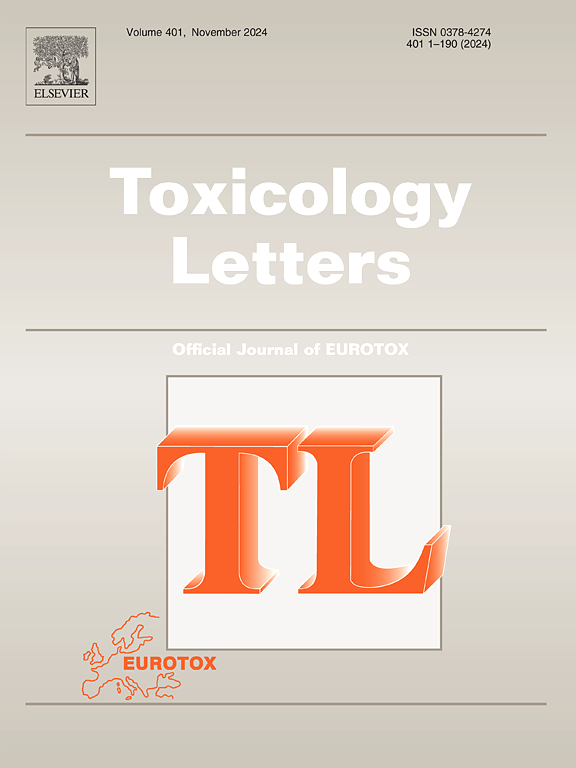Fecal metabonomics combined with 16S rRNA gene sequencing to study the mechanisms of cantharidin-induced hepatotoxicity
IF 2.9
3区 医学
Q2 TOXICOLOGY
引用次数: 0
Abstract
Cantharidin (CTD) serves as the principal bioactive compound in traditional Chinese medicine Mylabris, commonly employed in cancer treatment. Nevertheless, the clinical application of CTD is partly restricted by hepatotoxicity, and the toxicology mechanism is not fully elucidated. This study aims to explore the potential mechanism of CTD-induced hepatoxicity by targeted metabolomics-based UPLC-QTOF-MS/MS analysis and 16S rRNA sequencing. Studies have shown that the administration of CTD could lead to elevated serum biochemical indices including ALT and AST. Notably, dilatation of the liver central vein, hepatocellular necrosis, and slight vacuoles in rats were observed after CTD intervention. Fecal metabolomics found CTD could up-regulate 10 and down-regulate 33 metabolites, and metabolic pathway enrichment found that CTD could disrupt 2 metabolic pathways, including Arginine biosynthesis metabolism and β-Alanine metabolism. 16S rRNA gene sequencing analysis showed that CTD could increase the abundance of Turicibacter and Clostridium sensu stricto 1, but decrease the amounts of Prevotella 1. Our correlation analyses showed that alterations in the gut microbiota induced by CTD in rats may have impacted changes in the associated hepatic amino acid metabolism pathway. And the mechanism of action of CTD-induced hepatotoxicity may be related to inflammation, oxidative stress, impaired glucose metabolism and reduced hepatic glycogen storage. These findings will offer novel insights for the prevention and treatment of CTD-induced hepatotoxicity.
粪便代谢组学结合16S rRNA基因测序研究斑蝥素诱导肝毒性的机制
坎儿井苷(CTD)是传统中药麦饭石中的主要生物活性化合物,常用于治疗癌症。然而,CTD 的临床应用受到肝毒性的部分限制,其毒理机制尚未完全阐明。本研究旨在通过基于代谢组学的UPLC-QTOF-MS/MS分析和16S rRNA测序,探讨CTD诱导肝毒性的潜在机制。研究表明,服用 CTD 可导致 ALT 和 AST 等血清生化指标升高。值得注意的是,大鼠在服用 CTD 后出现肝中心静脉扩张、肝细胞坏死和轻微空泡。粪便代谢组学研究发现,CTD 可上调 10 种代谢物,下调 33 种代谢物;代谢通路富集研究发现,CTD 可破坏 2 条代谢通路,包括精氨酸生物合成代谢和 β-Alanine 代谢。16S rRNA 基因测序分析表明,CTD 会增加 Turicibacter 和梭菌 sensu stricto 1 的数量,但会减少 Prevotella 1 的数量。我们的相关分析表明,CTD 诱导的大鼠肠道微生物群的改变可能会影响相关肝脏氨基酸代谢途径的变化。而 CTD 诱导肝毒性的作用机制可能与炎症、氧化应激、糖代谢受损和肝糖原储存减少有关。这些发现将为预防和治疗 CTD 引起的肝毒性提供新的见解。
本文章由计算机程序翻译,如有差异,请以英文原文为准。
求助全文
约1分钟内获得全文
求助全文
来源期刊

Toxicology letters
医学-毒理学
CiteScore
7.10
自引率
2.90%
发文量
897
审稿时长
33 days
期刊介绍:
An international journal for the rapid publication of novel reports on a range of aspects of toxicology, especially mechanisms of toxicity.
 求助内容:
求助内容: 应助结果提醒方式:
应助结果提醒方式:


